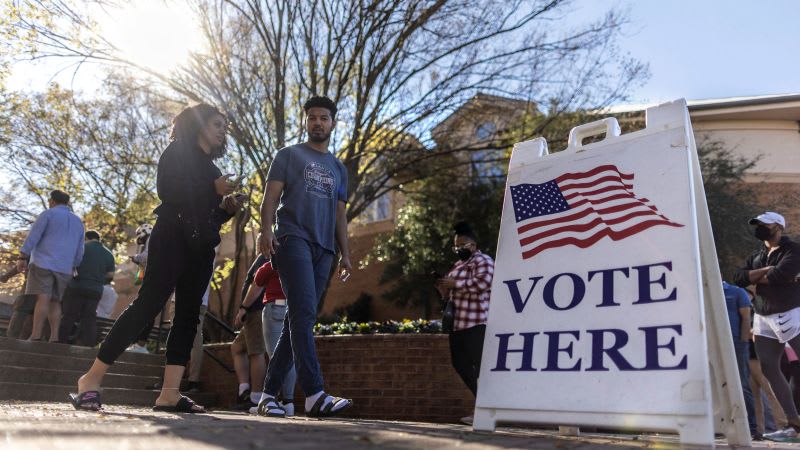[ad_1]
When Democrats won the House in 2018, they did it with help from a great uptick in turnout that achieved the highest voter turnout for a midterm election in more than 100 years.
Still, half the voting eligible population didn’t take part.
This year, early voting has surged in some of the key states, but when I talked to Michael McDonald, the University of Florida political scientist known for tracking early voting data, he predicted turnout would fall below that 2018 level.
McDonald has a new book that dissects the massive achievement of the 2020 presidential election, when nearly 67% of the voting eligible population cast ballots. There’s more about the book and his early voting tracker at his US Elections Project website.
We talked about what people should take away from the last election and what he’s seeing as he tracks early voting data for the current election.
Below is a condensed version of our longer phone conversation:
Takeaways from 2020
WOLF: You’ve written a book about this kind of amazing democratic achievement of voting during a pandemic. What do you want people to take away from that research?
MCDONALD: We have to give a lot of credit to the election officials, volunteers who staffed polling locations and the voters themselves for participating in an election at the highest turnout for presidential elections since 1900.
There was nobody alive that voted in the 2020 election that voted in the last election where we’d had higher turnout. That really is quite an achievement. We managed to do something that was historical under extraordinary circumstances. That’s the very positive news.
Unfortunately, the other takeaway from the book is the relentless attacks on voting that happened during the election, coming from the rhetoric with (former President Donald) Trump, and then just filtering on down through this party. That’s damaged democracy, and we can see that happening in real time with the 2022 election.
High turnout may be a symptom of extreme polarization
WOLF: You referred to the highest turnout in 100 years in 2020. I saw in the book that the turnout for the 2018 midterm was the highest since 1914. We’re seeing that more people are questioning the integrity of elections, but also that they’re taking part in elections more. What do you make of that?
MCDONALD: The last time that we had exceptionally high turnout was in the late 1800s, and that period was also marked by intense polarization. We don’t have any survey data so we can’t go back and ask the voters if they were polarized, but we can guess that what was happening among our elected officials at the federal government was also reflective of what was happening among the voters.
And so we’ve entered a period of higher polarization, and you can point to culprits for that. But whatever the cause, we’ve certainly reached a point where people really believe that it matters who is running the government and it really matters that their side is the one that is running the government.
When people perceive that difference between the parties and the importance the policy differences make on their lives, they’re more likely to vote.
It’s that old curse: “May you live in interesting times.” We live in interesting times. People are very interested in politics, and they are thus highly engaged in elections.
What early voting data tells us
WOLF: You are very well known for tracking early voting data. What can it actually tell us before Election Day?
MCDONALD: What you want to do is you want to take all the bits of information you can weave together and try to get a picture of where we are. So I don’t think early voting alone tells the picture just like I don’t think that polling alone tells you a definitive picture about where the election is going.
Polls have errors. Early voting has its nuances and measurement issues.
Read more from the conversation here:
A version of this story appeared in CNN’s What Matters newsletter. To get it in your inbox, sign up for free here.
Source link




